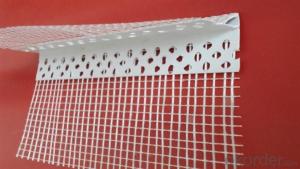Fiberglass, a versatile and resilient material, has been making waves in the renewable energy sector. Its lightweight, high strength, and corrosion-resistant properties make it an ideal choice for various applications within the industry. In this article, we’ll explore the role of fiberglass in renewable energy solutions, highlighting its benefits and potential impact on our future energy needs.
The Power of Fiberglass
Fiberglass is a composite material made from fine fibers of glass, woven into a fabric and then combined with a resin. This combination results in a material that is not only strong but also lightweight, making it perfect for applications where weight is a critical factor. In the renewable energy sector, this means that fiberglass can be used to create components that are both durable and efficient.
Wind Power: A Natural Fit
One of the most prominent uses of fiberglass in renewable energy is in wind turbines. The blades of these turbines are often made from fiberglass composites due to their strength and flexibility. These blades can be designed to be longer and lighter, allowing them to capture more wind energy and generate more power. The lightweight nature of fiberglass also reduces the overall weight of the turbine, making it easier to transport and install.
Solar Energy: Embracing the Sun
Fiberglass also finds its place in solar energy systems. It is used in the construction of solar panels, where its lightweight and durable properties help to reduce the overall weight of the system. This makes solar panels easier to install and transport, as well as more resistant to environmental factors such as wind and rain. Additionally, fiberglass can be used in the mounting structures for solar panels, providing a stable and long-lasting support system.
Energy Storage: A Key Component
Energy storage is a critical aspect of renewable energy systems, and fiberglass plays a role here as well. It is used in the construction of battery enclosures and other storage components, offering a lightweight and corrosion-resistant solution. This is particularly important in harsh environments where traditional materials may degrade over time.
Infrastructure and Transportation
Fiberglass is also used in the infrastructure that supports renewable energy systems. For example, it can be found in the construction of electrical poles and transmission towers, providing a strong and durable material that can withstand various weather conditions. In the transportation sector, fiberglass is used in the production of electric vehicles, contributing to their lightweight and efficient design.
The Environmental Impact
While fiberglass itself is an environmentally friendly material, the production process can have some environmental impacts. However, these impacts are generally less severe than those associated with traditional materials used in the energy sector. The use of fiberglass in renewable energy solutions can help to reduce the overall environmental footprint of these systems.
The Future of Fiberglass in Renewable Energy
As the world continues to shift towards renewable energy sources, the demand for materials like fiberglass is likely to increase. Its unique properties make it an essential component in the development of efficient and sustainable energy systems. The future looks bright for fiberglass, with ongoing research and development aimed at further enhancing its capabilities and applications within the renewable energy sector.
In Conclusion
Fiberglass has proven to be a valuable asset in the renewable energy industry. Its versatility, strength, and lightweight nature make it an ideal material for a wide range of applications. As we move towards a more sustainable future, the role of fiberglass in renewable energy solutions will only continue to grow. Embracing this material and its potential will be crucial in our quest for cleaner, greener energy sources.

